Jesse Hurd had a long career as a logger, but in this post I want to focus on his time in the military and showcase the photos he took during that time. His is an unusual story of military service. The photos were all pasted into an album and they do not seem to have been placed chronologically, nor were any of them labeled.
On October 2, 1917 four months after the US had declared war on Germany, Jesse, age 22, traveled from Buckley, Washington to enlist in the US Army at Fort Lawton in Seattle. He joined the 20th Engineers, which as a division of Forest Engineers became known as the “American Lumberjacks in France.” He had been working as a logger in the mountains of Washington state since about age 13, mostly in Pierce County northwest of Mount Rainier.
“We were the biggest regiment in the world, we were unique in military annals. We were not recruited hit-or-miss, nor gathered in by the numbers. Every man had to prove that he was qualified for responsible duty when he joined and God knows his proofs were put to the test when we got across.” –Twentieth Engineers, France 1917, 1918, 1919 (my apologies, the book has no page numbers)
He arrived at St. Nazaire, France with the second movement of forest troop transport on November 28, 1917. The foresters travelled on the Madawaska, a steam powered ocean liner captured from the Germans and quickly put to use as a troop transport. Within two months of enlisting, he was working in the softwood forest of the Vosges region of France.


There was potential danger to Jesse’s camera during the trip across the Atlantic, but it seems to come through alright:
“One incident on the voyage is worth remarking. Heavy weather was encountered south of Land’s End, and during the night the breakers succeeded in battering in a hatch cover and inundating several troop spaces. As one F Co. veteran narrates: “There was no panic among the men, but the confusion among the mess kits, shoes, clothing and equipment was terrible. Every time the vessel rolled, a roaring tidal wave raced across the decks, carrying everything before it, and bringing up with a bang against the side. All hands spent the next day in salvaging operations.”
Twentieth Engineers, France 1917, 1918, 1919

The 20th Engineers marched across France from the coast. Jesse’s battalion headquarters was near the upper right of the map above, at the fortified town of Epinal, on the Moselle River. He was in D Company, also called Company 4. He quickly rose to the rank of sergeant.
“Co. D (the 4th Co.) left St. Nazaire on the long journey to Lorraine and landed three days later at their permanent camp, Granges, seven miles from the front lines in the Luneville sector. Here they built a mill and established a logging camp, working under the added zest of proximity to the enemy. The outfit was more than once under fire, and hardly a man in the Company but took an occasional A. W. O. L. excursion into the lines.”
Twentieth Engineers, France 1917, 1918, 1919
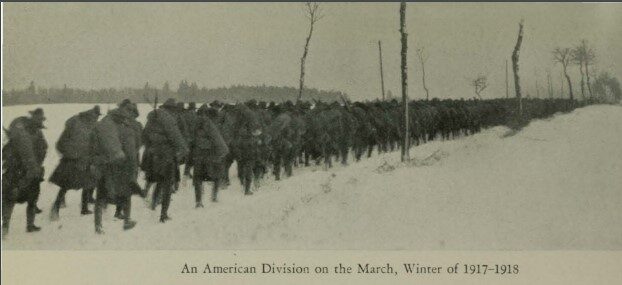
The mission of D Company’s battalion was to build a mill and then cut and process trees to produce railroad ties as fast as possible. Other lumber was also produced to build structures required by the Army to feed, house, and provide medical care for its soldiers. The mill was steam powered, run by burning sawdust. There was pressure to do the work as quickly as possible, danger of bombardment, and a lack of food.
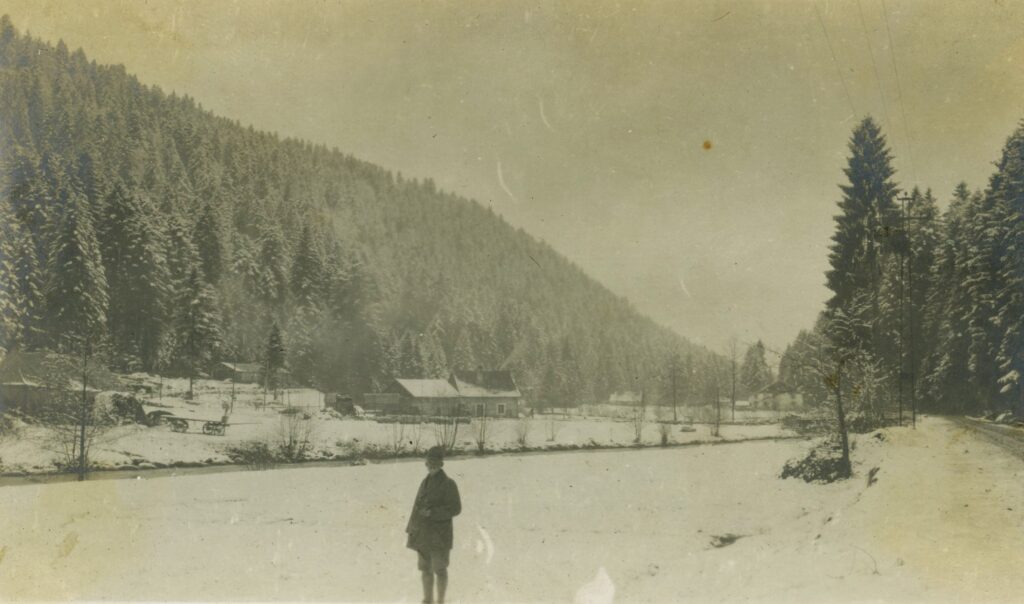
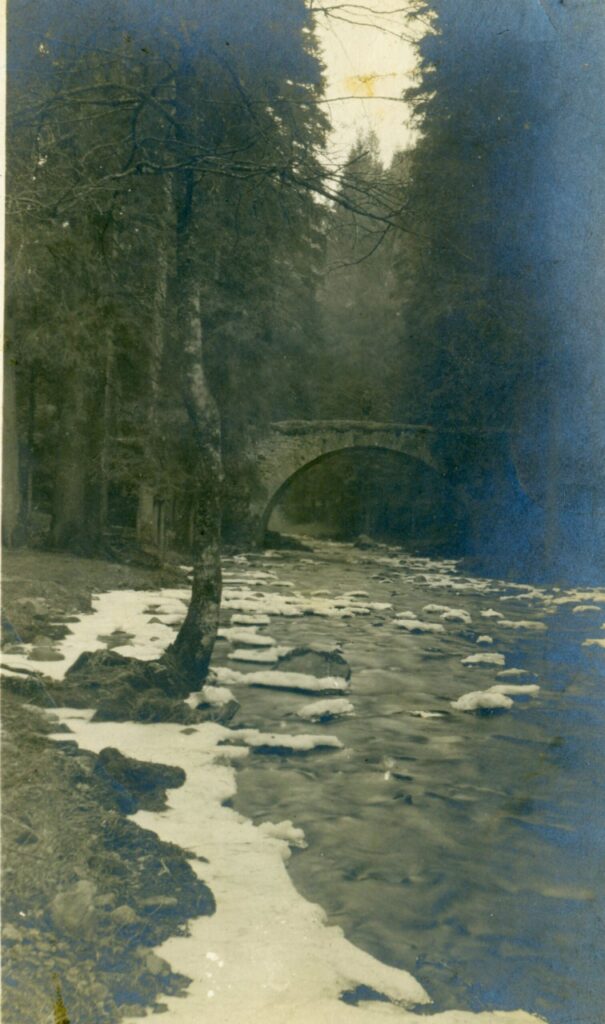




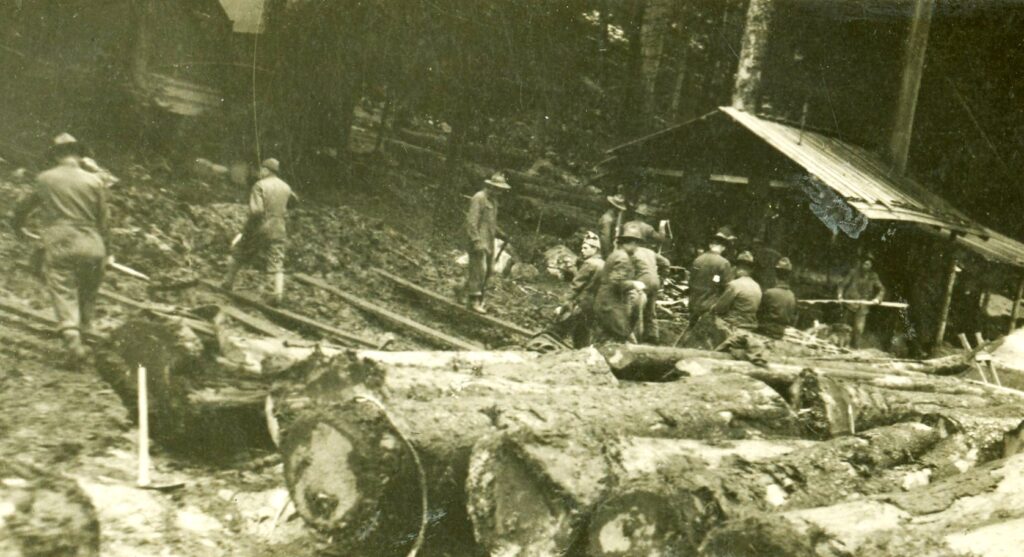
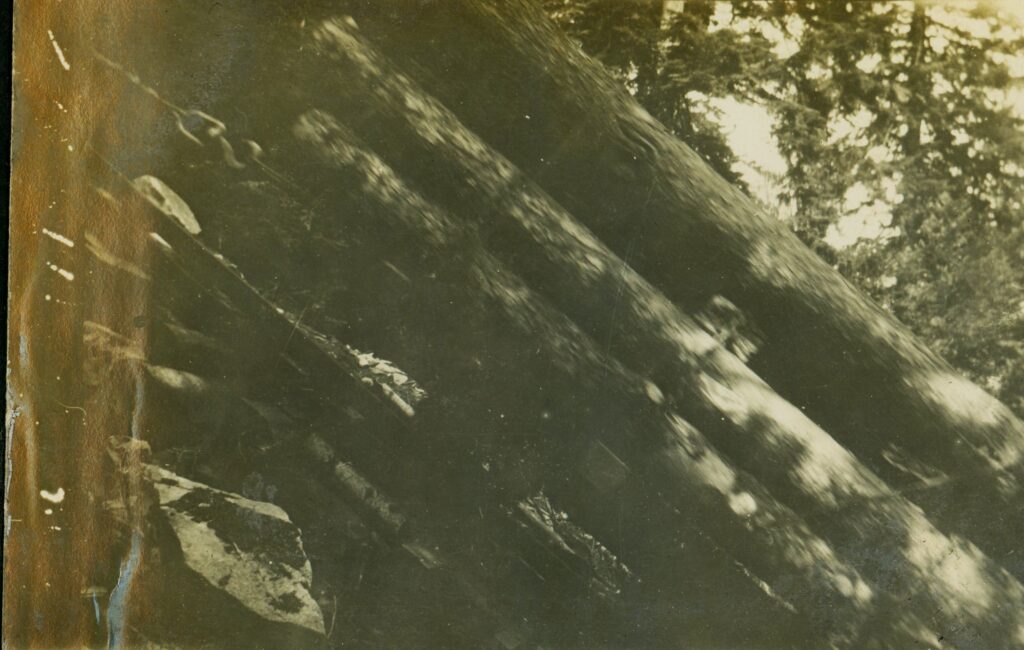
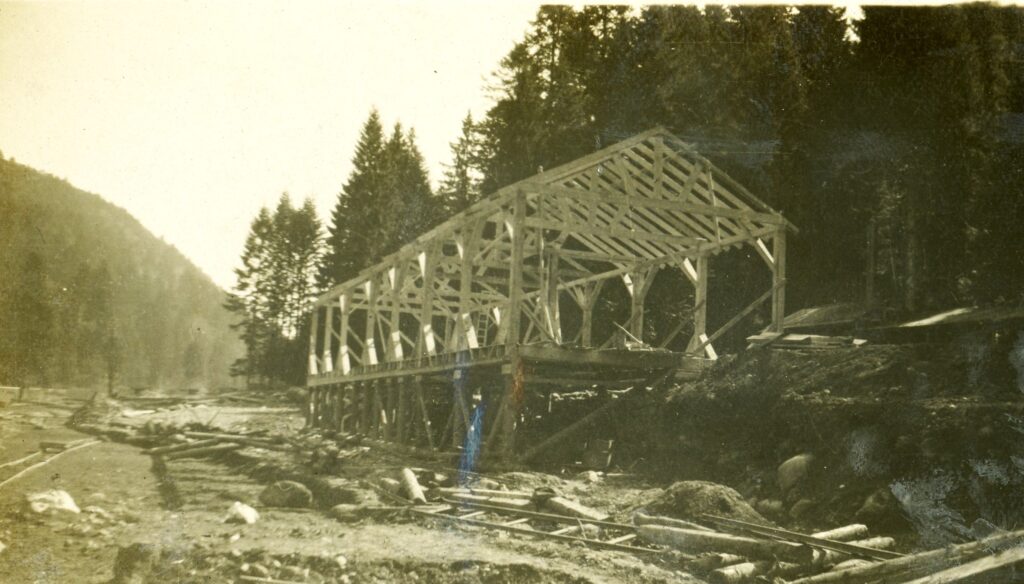
This may be the mill building under constriction. Local mills were used initially until the 20th Engineers were able to set up a larger sawmill that had been transported to France from the USA.
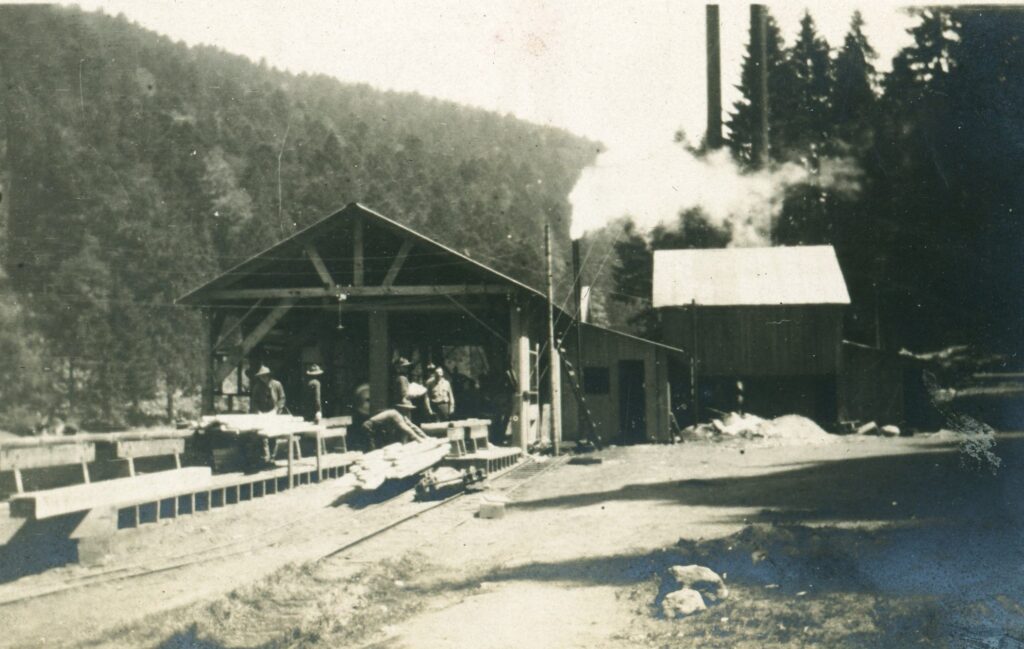



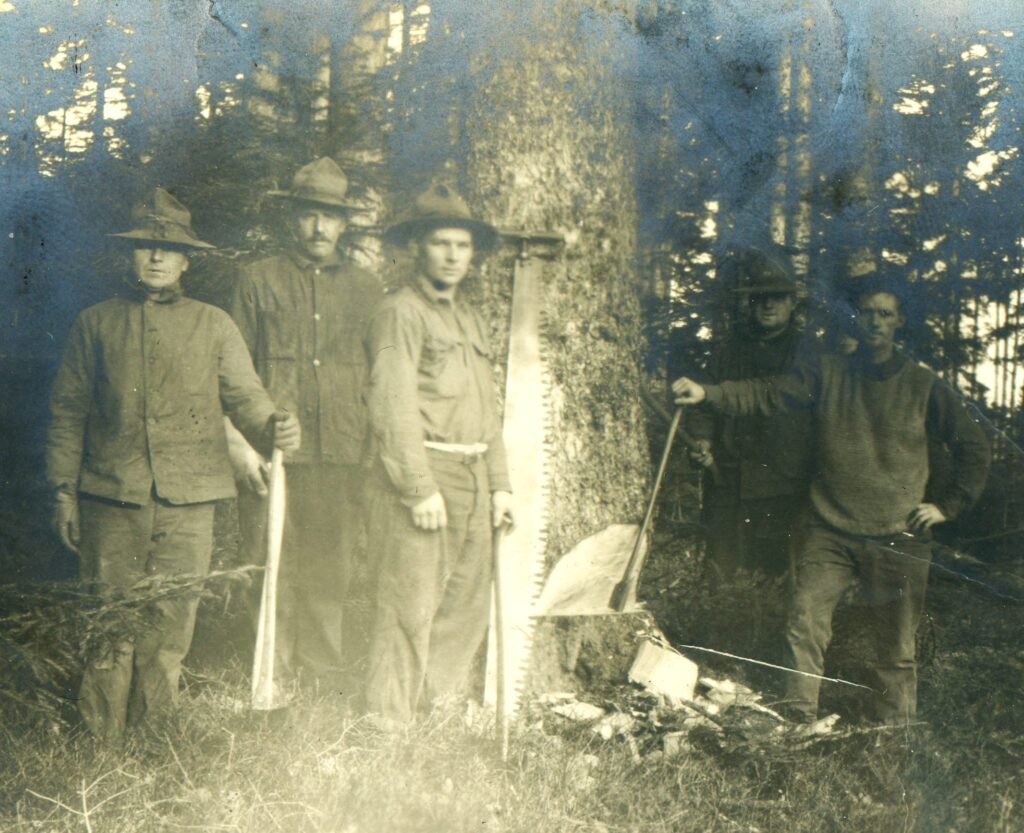
Man to the left of the crosscut saw in the photo above may be Jesse Hurd. Chainsaws were not widely used for timber until the mid to late 1920s.
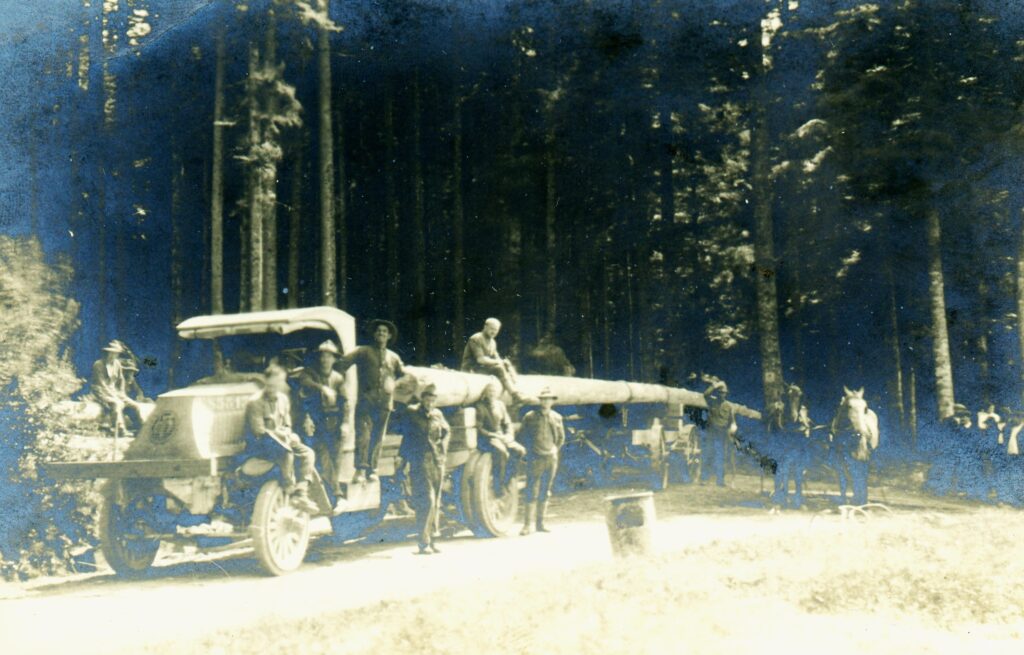
The long log on the truck may have become the pole for one end of a long-line setup.

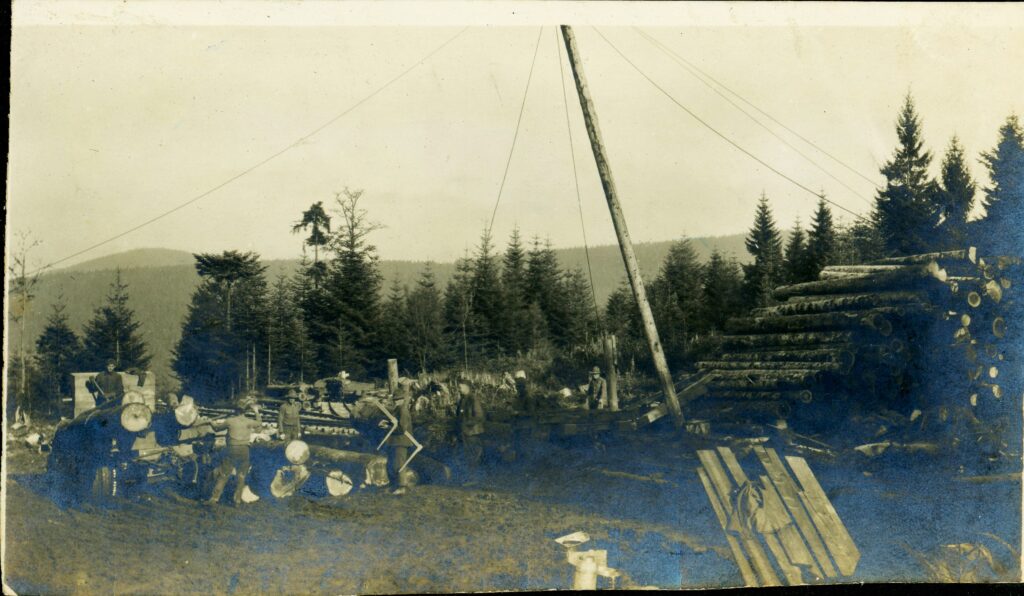
Jesse had worked on long-lines in Washington before he joined the army and helped set up this system in the Vosges.
Logs at this camp were also moved via narrow gauge railway.
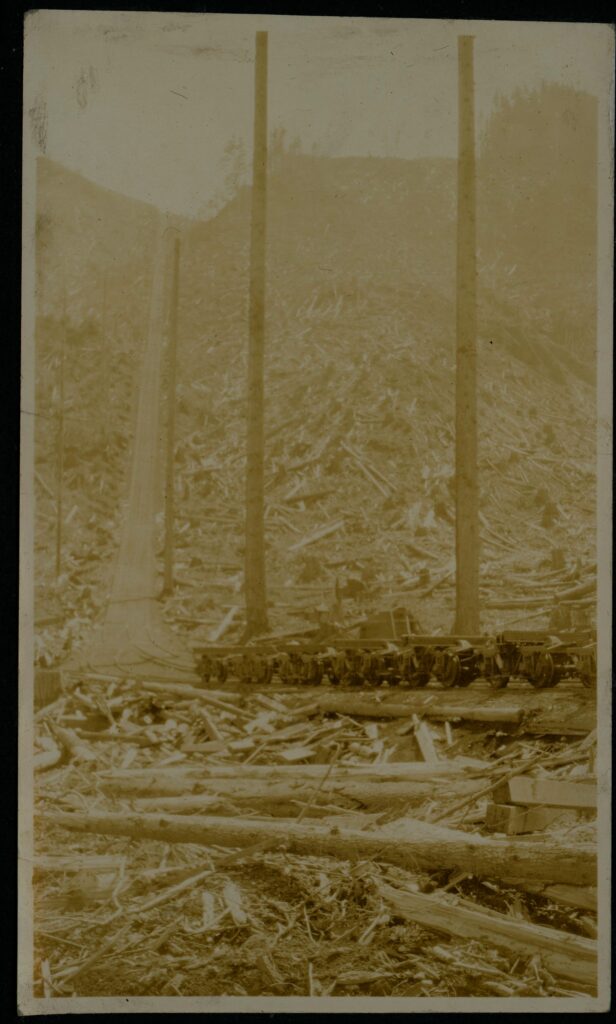
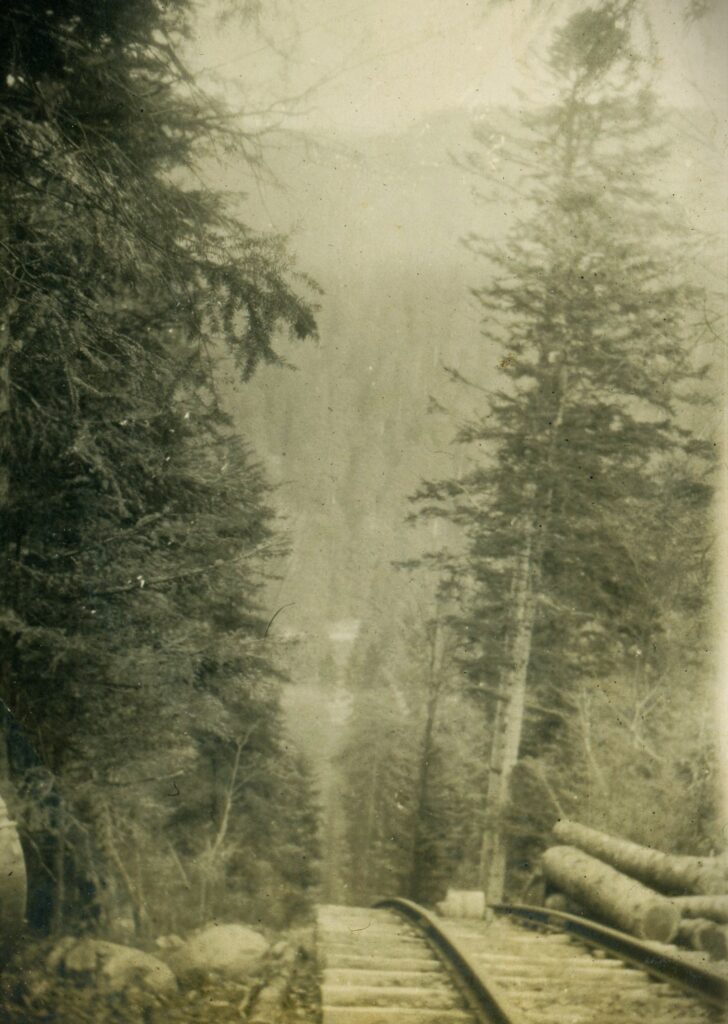
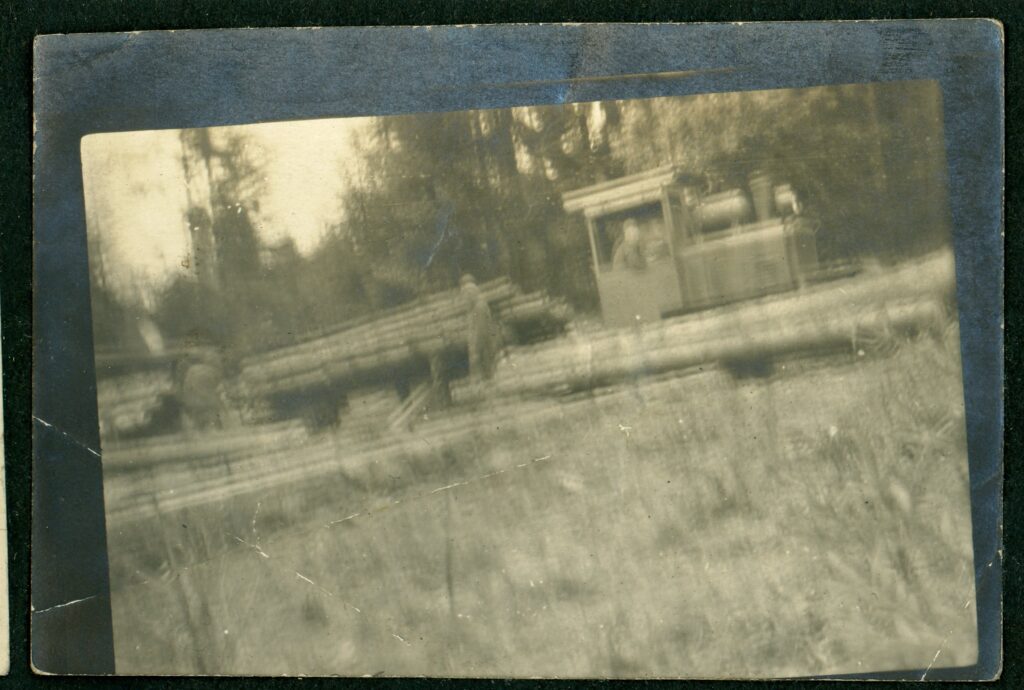

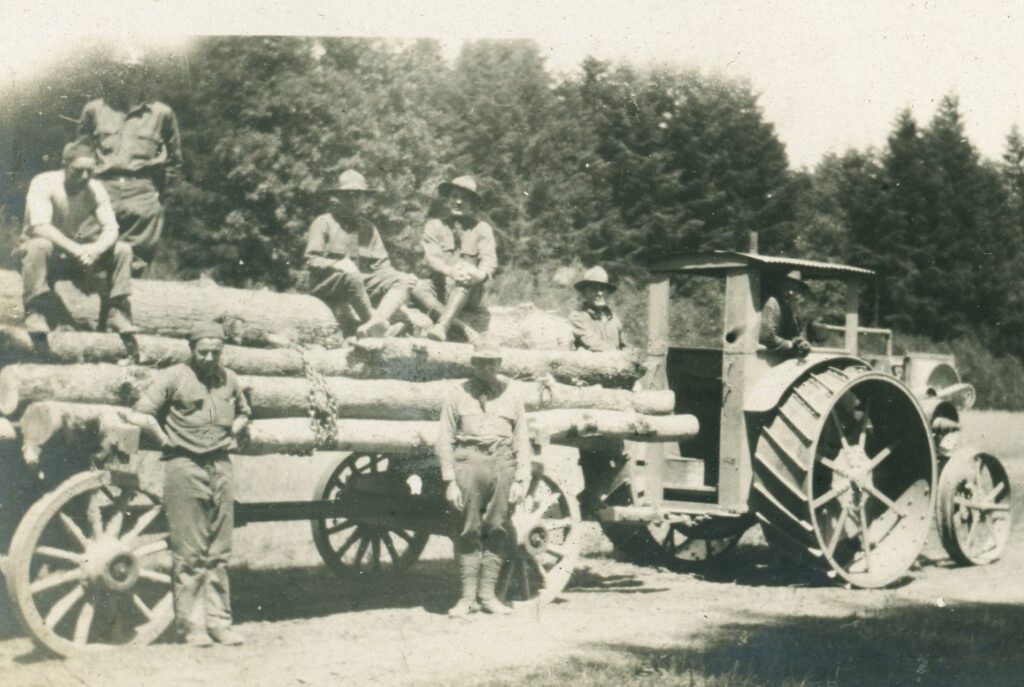

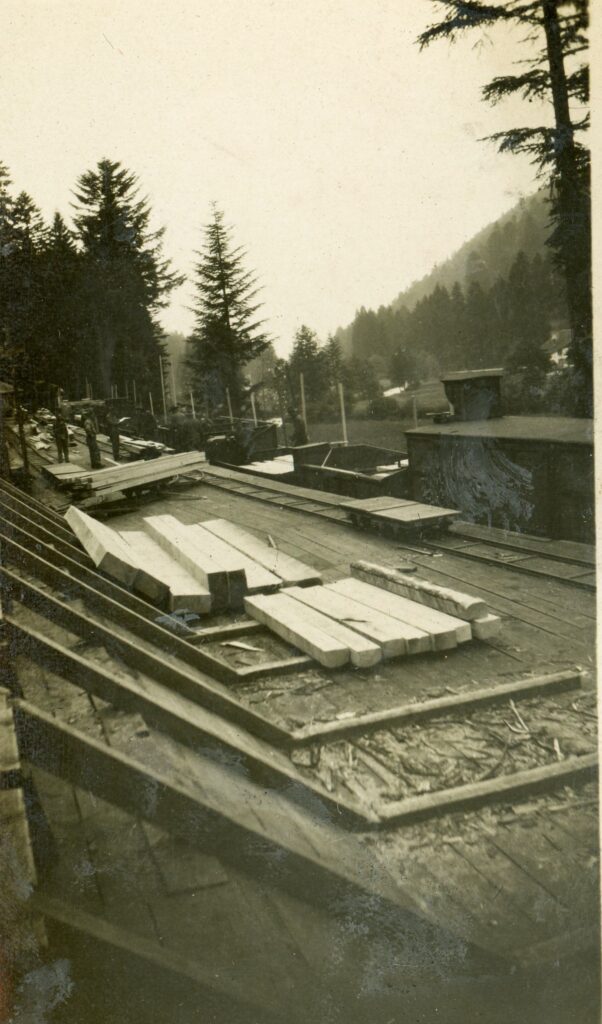
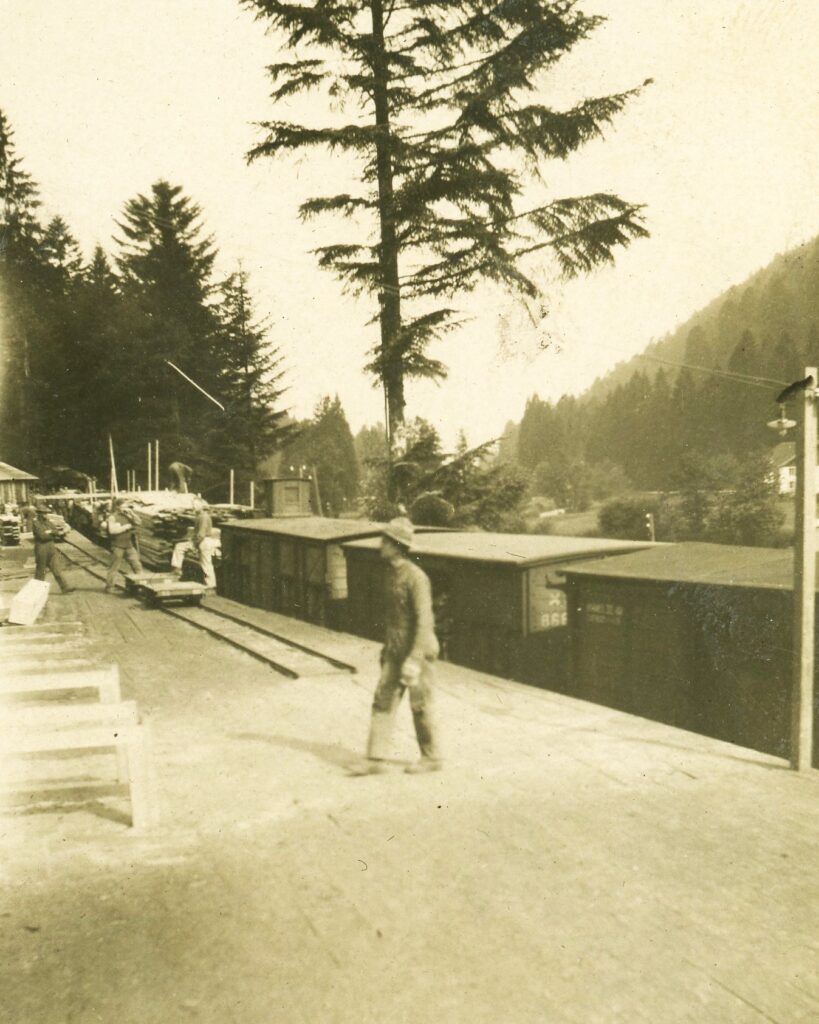
Cut lumber ready to be transported by railway; Photos by Jesse Hurd

At the 11th hour on the 11th day of the 11th month of 1918, the Great War ended. Jesse Hurd had enlisted almost exactly a year earlier. But the end of the war didn’t mean that the 20th Engineers were finished. The men did get regular leave again, and chances to travel a bit outside their camp. They kept working however, because lumber was still needed for rebuilding of roads and railroad tracks in France and also there was a long wait to get a boat back home. Jesse still had another 7 months in France. Eventually, he embarked from Pouillac, France on May 7, 1919.
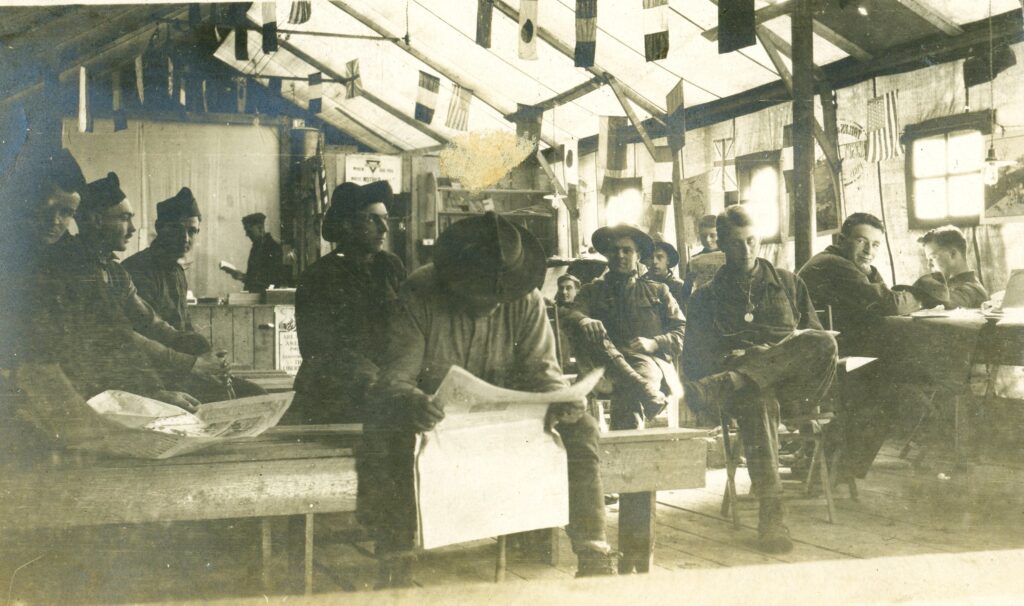
Photo by Jesse Hurd.



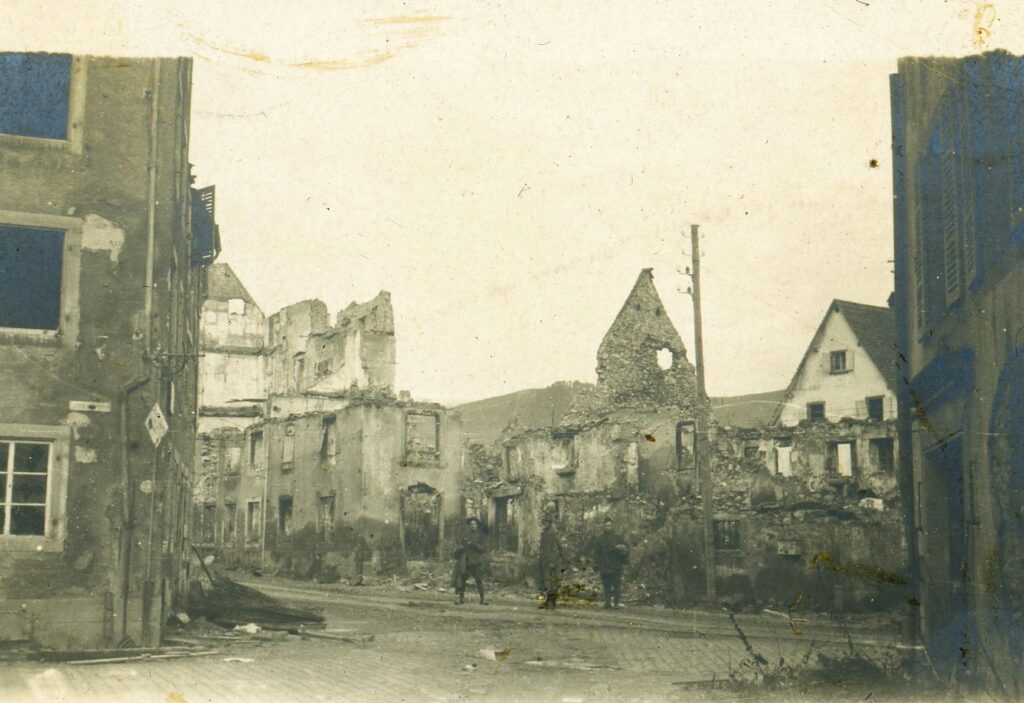
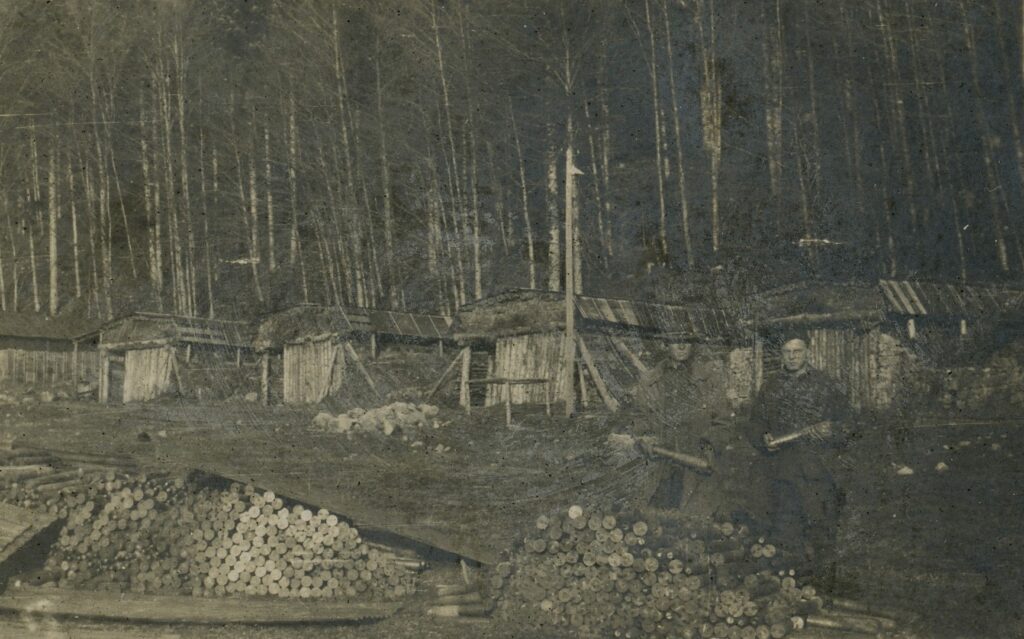
Photo by Jesse Hurd

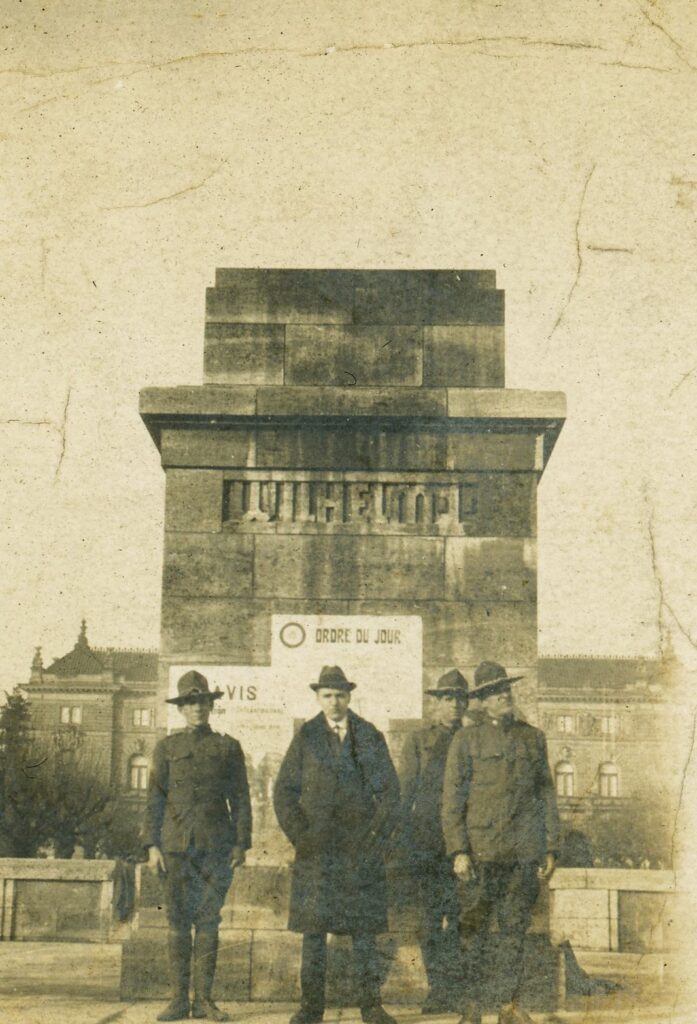
The Vosges Mountains were in the disputed territory of Lorraine, which Germany had annexed before the war. In the picture above, American soldiers stand in front of the base of a toppled statue of Kaiser Wilhelm II, the Emperor of Germany during World War I. Wilhelm II abdicated on November 9, 1918, two days before the Armistice was signed.
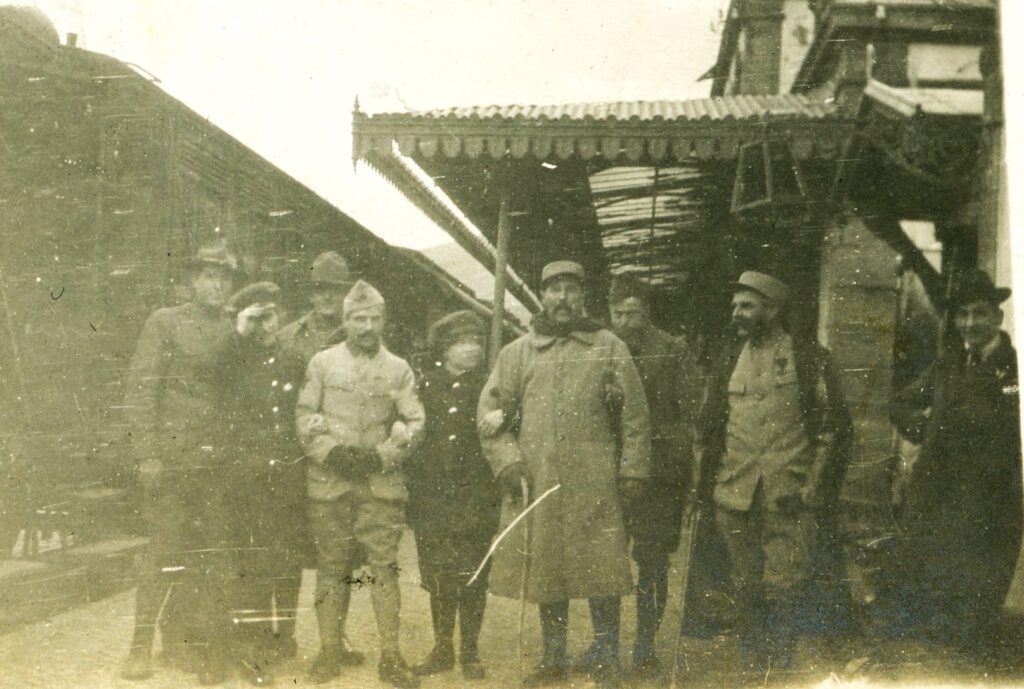

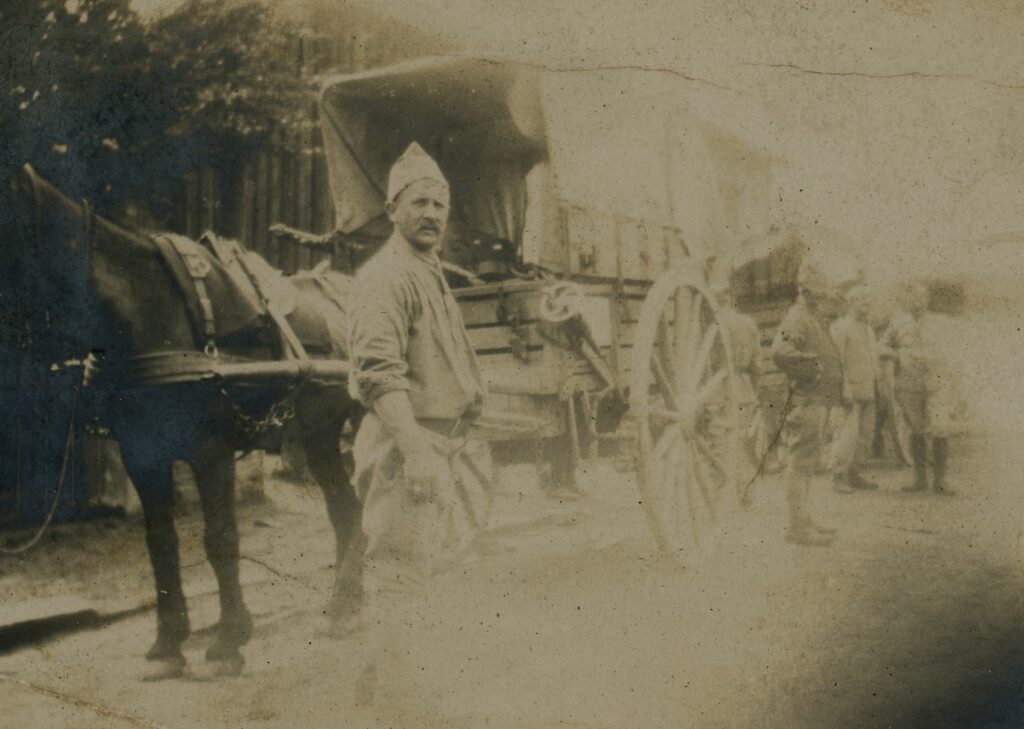

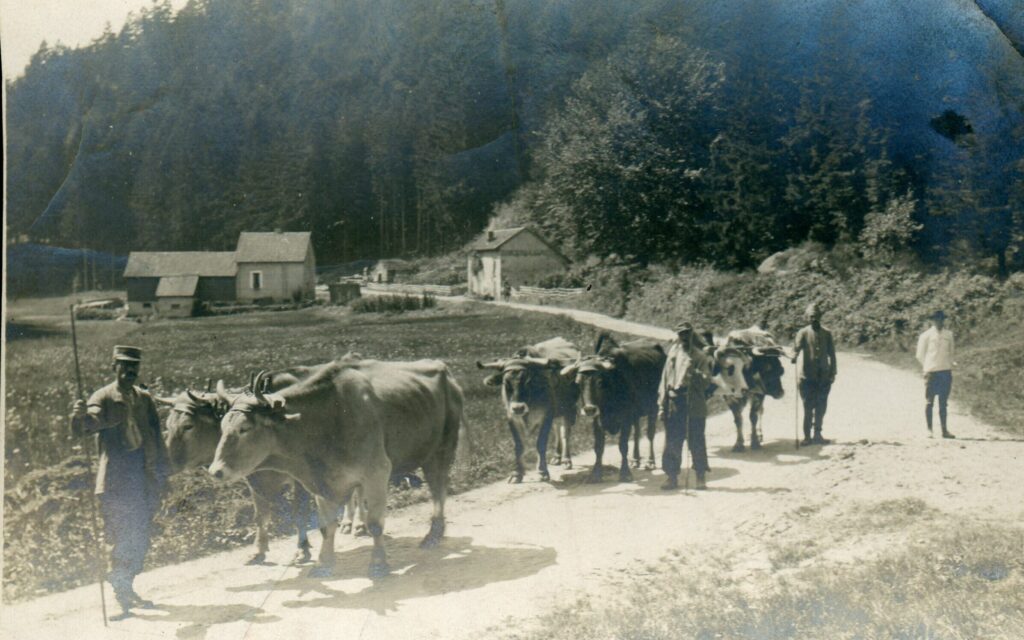

The ship in the photo above looks like it could be the Martha Washington, Jesse Hurd’s ride home across the Atlantic, but it also may be a ship he could see from the Martha Washington. Jesse Hurd arrived in New Jersey, on May 28, 1919, where he received an honorable discharge.
References:
http://www.20thengineers.com/images/ww1-20thEngineersBook.pdf
https://www.abmc.gov/sites/default/files/publications/Section7.pdf
https://coffeeordie.com/fighting-foresters/
https://foresthistory.org/digital-collections/world-war-10th-20th-forestry-engineers/